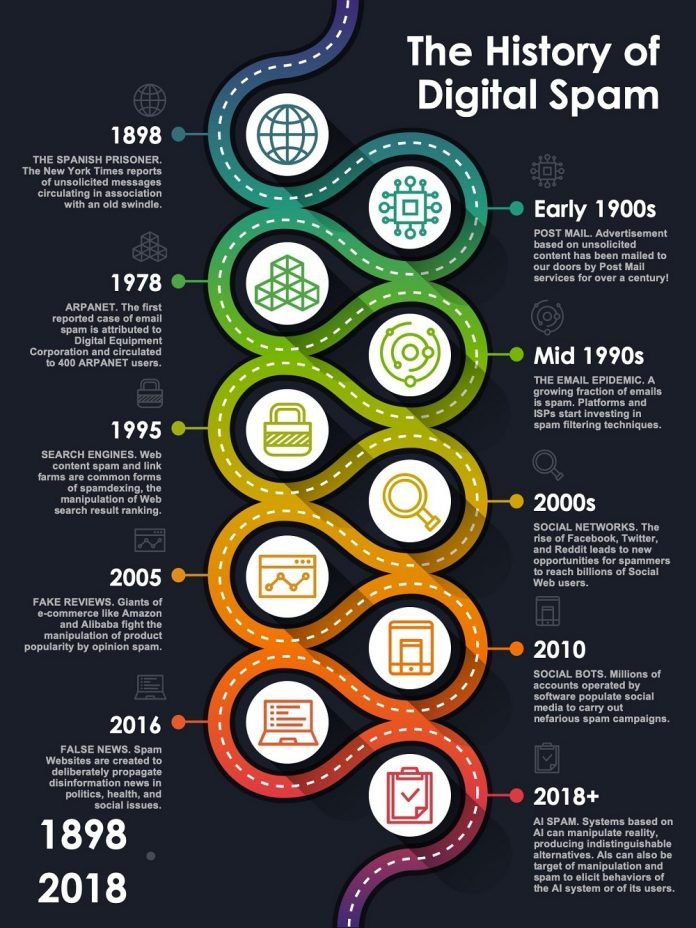
From a confidence trick originating in the late 19th century, to sophisticated AI that can manipulate reality, recreating anyone’s face or voice with almost pinpoint accuracy–spam has come a long way.
But what does the future of digital spam look like, what risks could it pose to our personal security and privacy, and what can we do to fight it?
In a new paper, which appeared in the August 2019 issue of Communications of the ACM (CACM), Emilio Ferrara, a USC research assistant professor in computer science and research team leader at USC Viterbi’s Information Sciences Institute, tracks the evolution of digital spam and explores its complex, and often surprising, history.
“The fight against spam is a constant arms race,” said Ferrara, who specializes in computational social sciences and is an expert in social media bots.
“Scams not only exploit technical vulnerabilities; they exploit human ones.”
Social media spam bots, which automatically produce content and interact with humans, have allowed spammers to scale their operations to an unprecedented level.
Since bots have been used for a variety of nefarious scenarios, from manipulation of political discussions to the spread of conspiracy theories and false news, the stakes are high.
In the future, Ferrara believes that deepfake technologies could be abused by well-resourced spammers to create AIs pretending to be human.
Milestones in Spam History:
- The term “spam” is internet slang that refers to unsolicited commercial email (UCE).
- The first reported case of spam occurred in 1898, when the New York Times reported unsolicited messages circulating in association with an old swindle.
- The first reported case of email spam occurred in 1979, attributed to Digital Equipment Corporation and circulated to 400 users of ARPANET, the precursor network of the modern internet.
- The term “spam” was coined in 1994, based on a now-legendary Monty Python’s Flying Circus sketch, where a crowd of Vikings sings progressively louder choruses of “SPAM! SPAM! SPAM!”
Facts:
- Billions of spam emails are sent every day.
- Email spam “detection algorithms” are approximately 98% accurate, but new breeds of spam are continually evolving.



